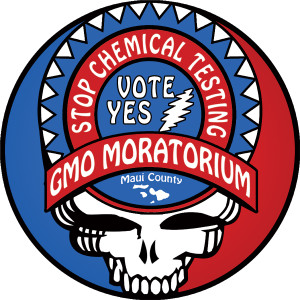The 12 most likely causes of the Apocalypse, according to scientists
A team from Oxford University’s Future of Humanity Institute and the Global Challenges Foundation has come up with the first serious scientific assessment of the apocalyptic risks we face. 
- Few of the 12 scenarios arise from situations that out of our control
- Others emerge from human advancements that have potential to go wrong
- It is a call to action based on idea humanity is able to rise to challenges
Synthetic biology (GMO’s)
Genetic engineering of super-organisms could be beneficial for humanity. But the release of a super-organism that targets humans, or a crucial part of the ecosystem, could end in disaster.
This could either be leaked accidentally – unintentionally from a laboratory – or deliberately – in instances of bio-warfare or bio-terrorism.
The impact could be worse than any natural pandemic.
Currently, attempts at regulation or self-regulation are in their infancy, and may not develop as fast as research does. WHY ARE WE WILLING TO RISK HUMAN EXISTENCE FOR THE PROFITS OF A FEW? 
GMO’s DESERVE MORE STUDY THAN THEY ARE GIVEN. THERE”S NOT ONE LONG-TERM CLINICAL HUMAN STUDY OF ANY GMO CROP. THE LONGEST STUDY EVER DONE WAS 3 MONTHS – NOT LONG ENOUGH TO SHOW HARM. HOW CONVENIENT FOR AGRO_CHEMICAL COMPANIES!
WHY DO WE TOLERATE A REGULATORY SYSTEM THAT’S CONTROLLED BY VESTED INTERESTS? THAT”S NOT SERVING “THE PEOPLE”!
A few of the scenarios arise from events that are out of our control – such as an asteroid hitting the Earth or the eruption of a supervolcano – but most emerge from human advancements.
Some of these developments, particularly those that are technological, have the potential to bring great benefits humans – but could also lead to our demise.
The report states: ‘This is a scientific assessment about the possibility of oblivion, certainly, but even more it is a call for action based on the assumption that humanity is able to rise to challenges and turn them into opportunities.’
Global pandemic: An apocalyptic disease would be incurable (like Ebola), nearly always fatal (like rabies), extremely infectious (like the common cold) and have long incubation periods (like HIV)
Supervolcano: The danger of a supervolcano – one capable of producing an eruption 1,000 times larger than normal – is the amount of aerosols and dust sent into the atmosphere.
Artificial intelligence: Artificial intelligence: Perhaps the most-discussed apocalyptic threat, this refers to the development of machines and software with human-level intellige
Extreme climate change: Scientists currently predict climate change caused by human activity – adding carbon dioxide to the atmosphere – could mean average global temperatures increase by 4C.
Asteroid impact: It might sound like the stuff of science-fiction – but a major asteroid impact could lead to the end of the world.
Ecological collapse: A complete breakdown of the global ecosystem – often leading to mass extinction.
Nanotechnology: Super-precise manufacturing on an atomic level could create materials with new properties – such as being highly resilient or ‘smart’ – that would be highly beneficial.
Bad local governance: This refers to two main categories of government disasters – failing to solve major solvable problems and actively causing worse outcomes.
Global system collapse: This broad term refers to an economic or societal collapse on a global scale that involves civil unrest and a breakdown of law and order that makes the continuation of human life impossible on Earth.
Unknown consequences: An umbrella category that represents all of the unknown unknowns – risks we have not thought about or appear extremely unlikely in isolation.


